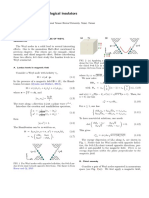0% found this document useful (0 votes)
140 views28 pagesEvolution of the Digital Age
Uploaded by
kristofermaman123Copyright
© © All Rights Reserved
We take content rights seriously. If you suspect this is your content, claim it here.
Available Formats
Download as PDF, TXT or read online on Scribd
0% found this document useful (0 votes)
140 views28 pagesEvolution of the Digital Age
Uploaded by
kristofermaman123Copyright
© © All Rights Reserved
We take content rights seriously. If you suspect this is your content, claim it here.
Available Formats
Download as PDF, TXT or read online on Scribd
/ 28























































































